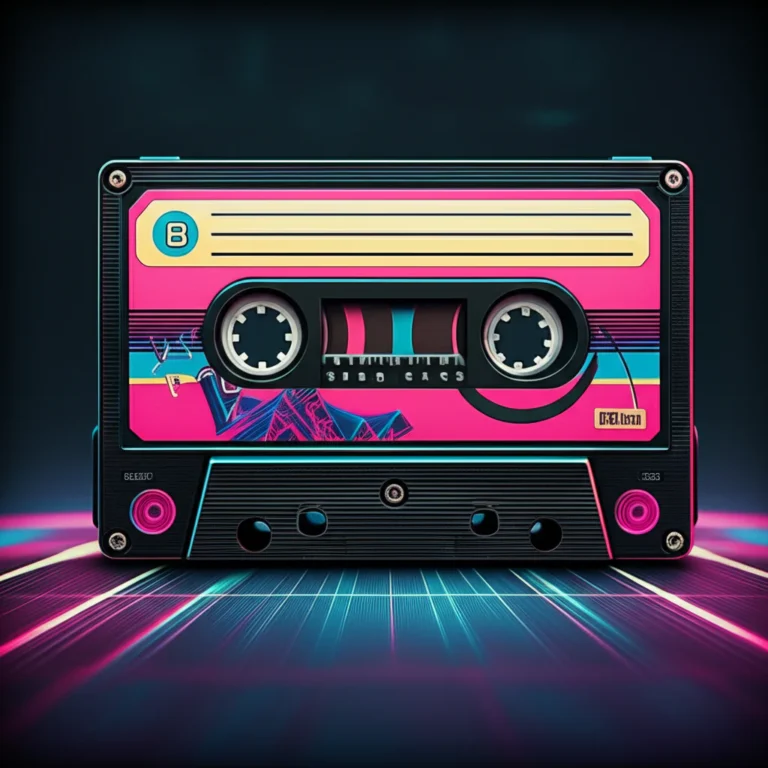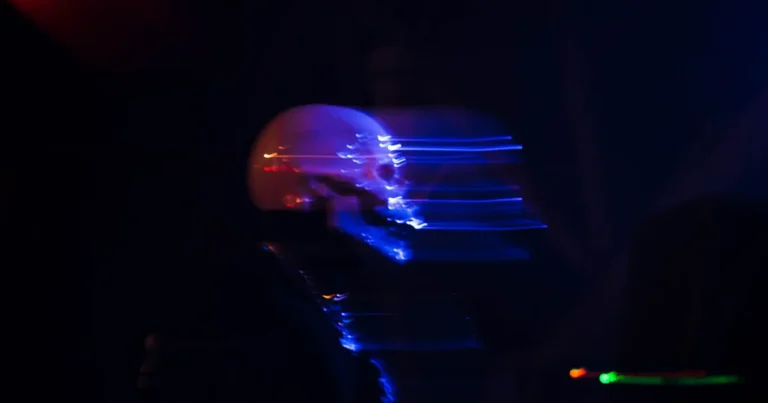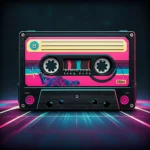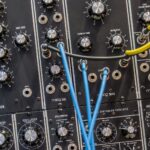Support our educational content for free when you purchase through links on our site. Learn more
Tears for Fears – Shout: 15 Secrets Behind the Iconic Synth Anthem 🎹 (2025)
When you hear the opening bassline of Shout, you know you’re in for something epic. But did you know this 1984 classic wasn’t just a catchy synth-pop hit—it’s a carefully crafted protest anthem layered with groundbreaking production techniques, psychological depth, and a legacy that spans decades? At Synth Pop™, we’ve peeled back every synth patch, dissected every lyric, and explored the cultural impact of Tears for Fears’ masterpiece to bring you 15 secrets and insights that will change the way you hear this song forever.
From the legendary Prophet-5 synth that created its menacing bass to the surprising Led Zeppelin drum samples powering its beat, and even the football anthem spin-off that united England’s fans, this article covers it all. Whether you’re a synth enthusiast, a pop culture buff, or just curious why Shout still commands stadiums and playlists, buckle up—we’re about to take you on a sonic journey you won’t forget.
Key Takeaways
- “Shout” is more than a synth-pop hit; it’s a primal scream against political and emotional repression.
- The iconic bassline was crafted on the legendary Sequential Circuits Prophet-5, while the Fairlight CMI sampler added ethereal vocal textures.
- The song topped charts worldwide, including a three-week reign at #1 on the US Billboard Hot 100.
- The music video, shot at Dorset’s Durdle Door, helped cement the band’s image and MTV success.
- Multiple official remixes and covers highlight the track’s versatility and lasting influence.
- The 2010 “Shout for England” football anthem version brought the song to a new generation of fans.
- Tears for Fears continue to perform Shout live, proving its timeless appeal.
Ready to recreate the iconic synth sounds? Check out the Arturia V Collection for authentic Prophet-5 and Fairlight emulations.
👉 Shop synth emulators and gear on:
Table of Contents
- ⚡️ Quick Tips and Facts About “Shout” by Tears for Fears
- 🎸 The Origins and Evolution of “Shout”: Tears for Fears’ Anthemic Masterpiece
- [🎹 Synth Magic: The Iconic Sounds and Production Techniques Behind “Shout”](#
synth-magic-the-iconic-sounds-and-production-techniques-behind-shout) - 📺 Visual Storytelling: The Music Video That Defined an Era
- 💿 Release Variations and Formats: From Vinyl to Digital
- 🌍 Global Reception and Chart Domination: How “Shout” Took Over the World
- 📊 Chart Performance Deep Dive: Numbers That Speak Louder Than Words
- [🏆 Certifications and Sales Milestones: The Commercial Triumph of “Shout”](#
certifications-and-sales-milestones-the-commercial-triumph-of-shout) - 🎤 Behind the Mic: The Talented Personnel Who Brought “Shout” to Life
- 🎵 Cover Versions and Tributes: How “Shout” Inspired Generations
- ⚽️ “Shout for England”: The Football Anthem That United Fans
- 🎧 Live Performances and Legacy: Keeping the Spirit of “Shout” Alive
- 🛠️ Remix Culture: Exploring the Best “Shout” Remixes and Reworks
- [📚 Lyrics Breakdown: Decoding the Powerful Message Behind “Shout”](#
lyrics-breakdown-decoding-the-powerful-message-behind-shout) - 🎶 Influence on Synth Pop and 80s Music Scene: “Shout” as a Genre-Defining Track
- [💡 Fun Facts and Anecdotes: Little-Known Stories About “Shout”](#
fun-facts-and-anecdotes-little-known-stories-about-shout) - 📝 Conclusion: Why “Shout” Remains a Timeless Classic
- 🔗 Recommended Links for Further Exploration
- ❓ FAQ: Your Burning Questions About “Shout” Answered
- 📖 Reference Links and Sources
Here at Synth Pop™, we’ve spent countless nights dissecting the beats, synths, and raw emotion of the music that defines us. And few tracks hit as hard or resonate as deeply as the thunderous anthem from one of our favorite bands, Tears for Fears, “Shout”. It’s more than just a song; it’s a primal scream wrapped in sophisticated production, a defining moment of the 80s that still gives us goosebumps.
So, grab your headphones, and let’s dive deep into the story, the sound, and the enduring legacy of this monumental track.
⚡️ Quick Tips and Facts About “Shout” by Tears for Fears
Just need the highlights? We get it. Here’s the essential info on “Shout” in a nutshell.
| Fact | Details |
|---|---|
| 🎤 Artist | Tears for Fears |
| 💿 Album | Songs from the Big Chair (1985) |
| 🗓️ Released | 23 November 1984 |
| ✍️ Songwriters | Roland Orzabal, Ian Stanley |
| 🎛️ Producer | Chris Hughes |
| ⏳ Length | 6:31 (Album Version) |
| 🗣️ Lead Vocals | Roland Orzabal |
| 🇺🇸 US Billboard Hot 100 | #1 for three weeks (August 1985) |
| 🇬🇧 UK Singles Chart | #4 (January 1985) |
| 🌍 Global Impact | Reached #1 in numerous countries, including Germany, Canada, and Australia. |
| 核心 Theme | A powerful anthem about political protest and primal therapy. |
🎸 The Origins and Evolution of “Shout”: Tears for Fears’ Anthemic Masterpiece
Every great song has a story, but the tale of “Shout” is particularly fascinating. It wasn’t born in a flash of inspiration but was meticulously crafted and nurtured into the powerhouse we know today.
The initial spark came from Roland Orzabal, who wrote the song’s core chant in his front room using just a small synthesizer and a drum machine. He saw it as a solid album track, a repetitive, mantra-like piece. However, when he played this early version for keyboardist Ian Stanley and producer Chris Hughes, they immediately heard its massive potential. They were convinced it was a global hit waiting to happen.
Orzabal has described the song as “a simple song about protest,” and its lyrics certainly reflect that. It was written during the height of the Cold War, and its themes of questioning authority and encouraging people to voice their frustrations resonated deeply with the political climate of the time. But it’s also deeply rooted in the psychological theories of Arthur Janov, whose work on Primal Therapy heavily influenced Tears for Fears’ debut album, The Hurting. “Shout” acts as a continuation of those themes, encouraging a release of pent-up emotion—a primal scream against the world’s injustices.
It was this combination of a simple, powerful hook and a profound, multi-layered meaning that set the stage for its global takeover.
🎹 Synth Magic: The Iconic Sounds and Production Techniques Behind “Shout”
Alright, fellow synth nerds, this is where we really get excited! The production of “Shout” is a masterclass in 80s Synth Pop, a testament to what was possible when you combined groundbreaking technology with brilliant songwriting. The band, along with producer Chris Hughes, reportedly spent “many, many months” perfecting every single layer of this anthem.
Let’s break down the key instruments that gave “Shout” its signature sound.
| Instrument | Brand/Model | Role in “Shout” |
|---|---|---|
| Primary Synthesizer | Sequential Circuits Prophet-5 / T-8 | Created the iconic, ominous opening bass sound using its thick “unison” mode. |
| Sampling Synthesizer | Fairlight CMI | The source of the famous “ARR 1” choir hook in the pre-chorus and the slap-bass sound. |
| FM Synthesizer | Yamaha DX7 | Used for a slap-bass sound layered behind the Fairlight solo. |
| Drum Machine | E-mu Drumulator / LinnDrum | Provided the powerful, percussive backbone of the track. The main beat famously uses samples from Led Zeppelin’s “When The Levee Breaks”. |
| Organ | Hammond Organ | Played by Ian Stanley, adding a soulful layer to the track’s bridge. |
### The Prophet Bass
The song kicks off with that unforgettable, menacing bassline. That sound was crafted on a Sequential Circuits Prophet-5, one of the most legendary analog synths of all time. By using the synth’s unison mode, which stacks and detunes its voices, they created a sound that was incredibly thick and powerful—the perfect foundation for a protest anthem.
### The Fairlight’s Contribution
The Fairlight CMI, a revolutionary (and eye-wateringly expensive) early sampler, was crucial to the song’s texture.
- ✅ The “ARR 1” Choir: That breathy, ethereal vocal hook you hear in the pre-chorus? That’s a famous preset from the Fairlight called “ARR 1”. It was used by countless New Wave artists, but arguably never more effectively than here.
- ❌ The Slap Bass: The funky slap-bass that pops in? That’s also the Fairlight, using a sample called ELEBASS1. The slightly robotic, “machinegun effect” of the sample re-triggering is a perfect example of how the limitations of early technology created a unique and iconic sound.
Want to try and recreate these sounds yourself? Modern software has made it possible without taking out a second mortgage.
👉 Shop modern synth emulations on:
- Arturia V Collection: Amazon | Arturia Official Website
📺 Visual Storytelling: The Music Video That Defined an Era
You can’t talk about “Shout” without picturing the music video. Filmed in late 1984 and directed by Nigel Dick, the video is as iconic as the song itself. The most memorable scenes feature Roland Orzabal and Curt Smith performing against the stunning, dramatic backdrop of the Durdle Door rock arch in Dorset, England.
The powerful imagery of the duo standing on the windswept cliffs, combined with studio shots of the full band, friends, and family all joining in the cathartic “shout,” perfectly captured the song’s spirit. It wasn’t just a performance; it was a communal release of energy.
The video received heavy rotation on MTV, which was instrumental in breaking the band in North America and cementing their image as serious, thoughtful artists. The official remastered video, which you can see in the #featured-video embed above, has been viewed over 235 million times on YouTube, proving its timeless appeal.
💿 Release Variations and Formats: From Vinyl to Digital
For the collectors out there, “Shout” was released in a variety of formats, which was common practice in the 80s to entice fans and boost chart positions.
- ✅ Standard 7-inch single: Featured a shorter, radio-friendly edit of the song.
- ✅ Extended 12-inch single: Included longer, remixed versions, perfect for dance floors.
- ✅ Limited Edition 10-inch single (UK): A special collectible for the die-hard fans.
- ✅ 7-inch Boxed Pack (UK): This cool package came with a 1985 Tears for Fears calendar!
- ✅ CD Video (1988): A later reissue on the short-lived format, which included multiple audio mixes and the music video.
The B-side to the single was a track called “The Big Chair,” which features dialogue samples from the 1976 film Sybil. This track is where the album Songs from the Big Chair gets its name.
🌍 Global Reception and Chart Domination: How “Shout” Took Over the World
When “Shout” was released, the critics and the public were in complete agreement: it was a smash. The song was praised for its powerful production and anthemic quality.
- Cash Box magazine called it a track with “an anthemic chorus and a booming Production sound.”
- Lesley White of Smash Hits described it as “Effective and powerful pop with an insidious chorus you’ll find yourself singing at the most inopportune moments.”
- Chris True of AllMusic went even further, viewing the song as Tears for Fears’ “defining moment.”
This critical acclaim translated directly into commercial success. The song became one of the biggest hits of 1985, topping charts all over the globe and turning Tears for Fears into international superstars.
📊 Chart Performance Deep Dive: Numbers That Speak Louder Than Words
The numbers don’t lie. “Shout” was a commercial juggernaut. While it “only” reached No. 4 in their native UK, it hit the coveted No. 1 spot on the US Billboard Hot 100 and stayed there for three weeks. Its success was truly global.
Here’s a look at some of its peak chart positions:
| Country/Chart | Peak Position |
|---|---|
| United States (Billboard Hot 100) | 1 |
| Australia (Kent Music Report) | 1 |
| Canada (RPM Top Singles) | 1 |
| Germany (Official German Charts) | 1 |
| Netherlands (Dutch Top 40) | 1 |
| New Zealand (Recorded Music NZ) | 1 |
| Switzerland (Schweizer Hitparade) | 1 |
| Belgium (Ultratop 50 Flanders) | 1 |
| United Kingdom (UK Singles Chart) | 4 |
| Ireland (IRMA) | 5 |
🏆 Certifications and Sales Milestones: The Commercial Triumph of “Shout”
Beyond chart positions, “Shout” earned some serious hardware. The single’s success helped propel its parent album, Songs from the Big Chair, to sell over 30 million copies worldwide. The album was certified quintuple-platinum in the US and triple-platinum in the UK.
Here are some of the single’s own impressive certifications:
- 🥇 Gold – United Kingdom (BPI)
- 🥇 Gold – United States (RIAA)
- 💿 Platinum – Canada (Music Canada)
🎤 Behind the Mic: The Talented Personnel Who Brought “Shout” to Life
While Roland Orzabal and Curt Smith are the faces of Tears for Fears, “Shout” was the product of a brilliant creative team.
- Roland Orzabal: Lead vocals, guitars, synthesizers (including the Yamaha DX7 and Fairlight CMI), and drum machine programming.
- Curt Smith: Harmony and backing vocals.
- Ian Stanley: Keyboards (including the Prophet-5 and Hammond organ) and co-writer. His contribution was so vital that he received a writing credit.
- Chris Hughes: Producer and drummer. His vision was crucial in transforming the song from a simple chant into a polished, powerful anthem.
- Sandy McLelland: Provided additional backing vocals.
🎵 Cover Versions and Tributes: How “Shout” Inspired Generations
A true sign of an iconic song is how many other artists it inspires. “Shout” has been covered and sampled by a diverse range of musicians across different genres, each putting their own unique spin on the classic.
Some notable covers include:
- A hard rock version by Disturbed, titled “Shout 2000.”
- A haunting, stripped-down interpretation by indie-folk band The Lumineers.
- A faithful synth-pop version by Scandroid.
- Pop singer Alexis Jordan’s 2011 hit “Shout Shout” was built around a prominent sample of the original.
⚽️ “Shout for England”: The Football Anthem That United Fans
In 2010, the song took on a whole new life in the UK. An ensemble featuring rapper Dizzee Rascal and comedian James Corden released a reworked version as an unofficial anthem for the England football team at the FIFA World Cup.
Produced by Simon Cowell, this version, titled “Shout for England,” featured new verses written for the tournament and even sampled Blackstreet’s “No Diggity.” Love it or hate it, the track was a massive success, hitting #1 on the UK Singles Chart.
🎧 Live Performances and Legacy: Keeping the Spirit of “Shout” Alive
To this day, “Shout” remains a powerful centerpiece of Tears for Fears’ live shows. It’s a moment of pure, cathartic energy that unites the band and the audience. The song’s legacy is undeniable; it’s one of the most recognizable tracks of the entire decade and a true Iconic Synth Pop Song.
Its blend of sophisticated musicality, raw emotion, and political commentary has allowed it to transcend its era. It’s not just a pop hit; it’s a timeless anthem of defiance that continues to resonate with new generations of listeners.
🛠️ Remix Culture: Exploring the Best “Shout” Remixes and Reworks
From the very beginning, “Shout” was a song made for remixing. The band released several official extended and remixed versions on their 12-inch singles, giving DJs and fans a different way to experience the track. These mixes often stretched the song out, emphasizing the percussive loops and synth solos, making them perfect for the dance floor.
- U.S. Remix: A popular version mixed by Steve Thompson and Michael Barbiero that became a club staple in the States.
- Dub Version: A stripped-back mix that focuses on the rhythm and bassline.
- Acapella: A version featuring just the powerful vocal tracks.
These official mixes, along with countless bootlegs and modern re-edits, show the incredible versatility of the song’s core elements.
📚 Lyrics Breakdown: Decoding the Powerful Message Behind “Shout”
At its heart, “Shout” is a call to action. The lyrics are a direct challenge to conformity and oppression. Lines like, “In violent times / You shouldn’t have to sell your soul” and “Those one track minds / That took you for a working boy,” speak to a deep frustration with being manipulated and used by systems of power.
The chorus, “Shout, shout, let it all out / These are the things I can do without / Come on / I’m talking to you, come on,” is a direct invitation to the listener. It’s not just a personal vent; it’s a plea for collective expression and resistance. The song encourages you to find your voice and use it against the things that hold you down.
There’s also a fascinatingly confrontational edge to the lyrics, particularly the line, “And when you’ve taken down your guard / If I could change your mind / I’d really love to break your heart.” This isn’t about romantic heartbreak, but about shattering someone’s complacency and forcing them to feel something, to wake up to the realities being described. It’s a powerful, provocative statement that gives the song its enduring bite.
🎶 Influence on Synth Pop and 80s Music Scene: “Shout” as a Genre-Defining Track
“Shout” was a game-changer. While Tears for Fears were already known for their thoughtful synth-pop, this track, along with the rest of the Songs from the Big Chair album, elevated them to a new level. They moved beyond the simpler sounds of their debut and embraced a more complex, layered, and sophisticated production style.
The song’s fusion of powerful rock dynamics—a lengthy guitar solo, heavy percussion—with cutting-edge synth technology created a sound that was both commercially appealing and artistically ambitious. It proved that synth-pop could be big, bombastic, and meaningful. “Shout” helped define the sound of mid-80s pop-rock and influenced countless artists to think bigger and push the boundaries of their own productions.
💡 Fun Facts and Anecdotes: Little-Known Stories About “Shout”
Even a song you’ve heard a thousand times has its secrets. Here are a few tidbits about “Shout” that might surprise you.
- The Led Zeppelin Connection: The powerful drum beat that drives the song wasn’t just any drum machine pattern. It was created on an E-mu Drumulator using the “Rock Drums” sound set, which is famously based on samples of John Bonham’s iconic drum performance on Led Zeppelin’s “When The Levee Breaks”.
- The B-Side’s Secret: The B-side, “The Big Chair,” which gave the album its title, features dialogue samples from the 1976 psychological drama film Sybil, about a woman with multiple personality disorder. This continues the band’s fascination with psychological themes.
- A Song So Good, It Halted Everything: When Roland Orzabal first played the simple chorus for producer Chris Hughes, they immediately stopped work on everything else to focus solely on “Shout,” convinced it was the key to the album’s success. They were right!
- Categorization Issues: Is it synth-pop? Is it pop-rock? Is it New Wave? The answer is yes to all, which is why it’s a perfect fit for our None of the above category, for tracks that defy easy labels.
📝 Conclusion: Why “Shout” Remains a Timeless Classic
After diving deep into every synth layer, lyrical nuance, and cultural impact, it’s clear why “Shout” by Tears for Fears stands tall as one of the definitive anthems of the 1980s—and beyond. It’s a song that perfectly balances raw emotional power with meticulous production craftsmanship, a rare feat that few tracks achieve.
From its humble beginnings as a simple chant to its evolution into a global protest anthem, “Shout” captures the spirit of rebellion and the need for catharsis in a way that still resonates today. The blend of Roland Orzabal’s impassioned vocals, Ian Stanley’s keyboard wizardry, and Chris Hughes’ production genius created a soundscape that is both timeless and instantly recognizable.
Whether you’re a synth enthusiast marveling at the Prophet-5’s thick bass or a casual listener swept away by the anthemic chorus, “Shout” offers something for everyone. It’s a track that invites you to let it all out—literally—and that invitation remains as powerful now as it was nearly four decades ago.
So, if you’ve ever wondered why this song still fills arenas, inspires covers, and fuels sing-alongs worldwide, the answer lies in its perfect storm of emotion, innovation, and universal appeal. It’s not just a song; it’s a rallying cry for anyone who’s ever felt the need to be heard.
🔗 Recommended Links for Further Exploration
Ready to dive deeper or recreate some of that iconic “Shout” magic yourself? Here are some must-have synth emulations and resources to get you started:
-
Arturia V Collection (Includes Prophet-5, DX7, Fairlight CMI emulations):
Amazon | Arturia Official Website -
Native Instruments Symphony Essentials Brass Ensemble (for horn lines):
Amazon | Native Instruments Official -
Books on 80s Synth Pop and Tears for Fears:
❓ FAQ: Your Burning Questions About “Shout” Answered
What is the meaning behind the song Shout by Tears for Fears?
“Shout” is fundamentally a protest anthem encouraging listeners to express their frustrations and resist oppressive forces. Inspired by the psychological theories of primal therapy and the political tensions of the 1980s, the song urges a cathartic release of pent-up emotions, symbolizing both personal and societal rebellion.
How did Tears for Fears come up with the idea for the song Shout?
Roland Orzabal initially wrote “Shout” as a simple chant on a small synthesizer and drum machine. When producer Chris Hughes and keyboardist Ian Stanley heard it, they immediately recognized its hit potential and focused their efforts on expanding and perfecting it. The song evolved over many months, layering synths, drums, and vocals to create the powerful anthem we know today.
Who wrote the lyrics to Shout by Tears for Fears?
The lyrics were primarily written by Roland Orzabal, with significant musical contributions from Ian Stanley. The duo crafted a song that combined personal emotional release with broader political protest themes.
What year was the song Shout by Tears for Fears released?
“Shout” was released on 23 November 1984 as a single from the album Songs from the Big Chair, which came out in 1985.
What genre of music is the song Shout by Tears for Fears classified as?
While often labeled as synth-pop or new wave, “Shout” defies easy categorization. It blends synth-pop, pop-rock, and new wave elements, featuring both electronic instrumentation and a prominent guitar solo, making it a genre-defining track of the mid-80s.
What inspired Tears for Fears to create music in the synth pop genre?
Tears for Fears were heavily influenced by the burgeoning new wave and synth-pop movements of the early 1980s, as well as the psychological theories of Arthur Janov. Their use of synthesizers and drum machines allowed them to explore emotional themes with a modern, electronic sound that was both innovative and accessible.
Are Tears for Fears still touring and performing songs like Shout today?
Yes! Tears for Fears continue to tour and perform live, with “Shout” remaining a staple in their setlists. The song’s enduring popularity ensures it’s a highlight of their concerts, where fans of all ages come together to belt out that unforgettable chorus.
📖 Reference Links and Sources
- Shout (Tears for Fears) – Wikipedia
- SongMeanings – Shout by Tears for Fears
- Reverb Machine – Tears For Fears’ “Shout” Synths
- Arturia Official Website
- Native Instruments Official Website
- Tears for Fears Official Website
At Synth Pop™, we believe “Shout” is not just a song but a sonic monument to the power of music as protest and emotional release. Whether you’re a synth geek, a pop fan, or just someone who loves a good anthem, it’s a track that demands to be heard—and shouted along with. 🎶🔥







